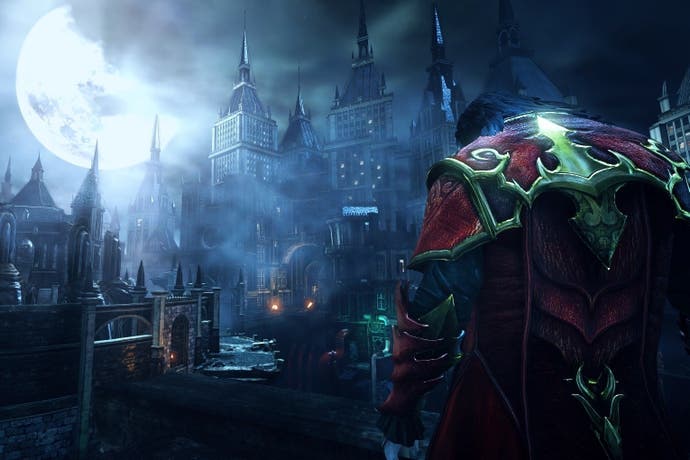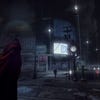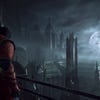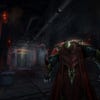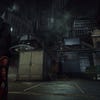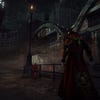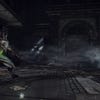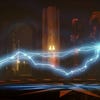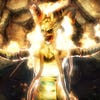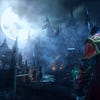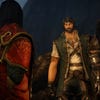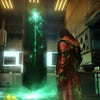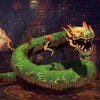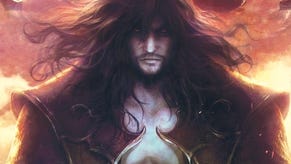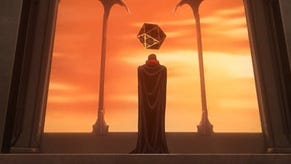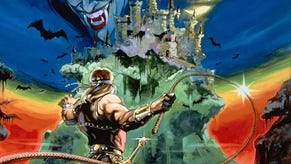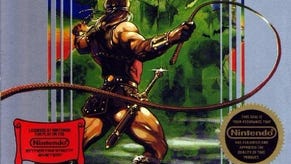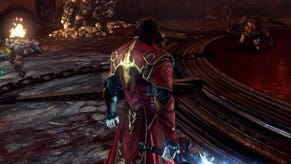"The God of War comparisons really pissed us off"
Castlevania: Lords of Shadow 2 expands into Legend of Zelda territory.

"The God of War comparisons really pissed us off."
Producer Dave Cox is in good form, as he usually is when we meet. And why not? Under the ballsy Englishman's guidance, Spanish developer MercurySteam has reinvented the Castlevania series, deftly navigating the tricky transition into modern day gaming so many have struggled with.
That reinvention began with Castlevania: Lords of Shadow, a PlayStation 3 and Xbox 360 hack and slash action game that sparked scepticism when it was announced but pleasantly surprised critics when it was released. Its sales success spawned a 3DS 2.5D spin-off, a HD remake of that spin-off and a Collection. Now, nearly four years later, MercurySteam's tenure as custodian of the Castlevania reinvention comes to an end with Lords of Shadow 2.
Lords of Shadow 2 expands upon its predecessor in a number of ways. A playthrough of the game's opening hours reveals an action game more akin to the likes of Darksiders than - whisper it - God of War, with role-playing elements and a structure inspired by The Legend of Zelda. Dracula - the star - has a base of operations, a Gothic castle that seemingly lives and breathes as the game's protagonist seeks an end to his immortal life. And from there the modern day city can be explored.
We're not talking about an Arkham City type game here, or a Liberty City sandbox. Castlevania's city sits somewhere between Hyrule Field and Metroid's space ship, which inaccessible areas made accessible after certain items and abilities are unlocked.
"We wanted to create a game that was a deep, action adventure game, more of an RPG in many ways," Cox explains.
"And we wanted a game that felt like a big step up from the previous game. The previous game had this epicness to it but there were a lot of areas where we could have improved certain aspects - not just the combat but the exploration. The sense of exploring the world.
"One of the problems with the previous game, when it was loading level by level, we had the exposition from Patrick Stewart, but really that was to cover a problem rather than fixing a problem.
"We wanted it to be more seamless. We wanted it to feel like you could get engrossed in the world and feel like you're really in it. In order to do that it meant starting from the beginning from a technology point of view."
Lords of Shadow 2 begins in the Middle Ages with a bombastic opening that charts the demise of Dracula himself in the face of unrelenting angelic forces. During this sequence you're taught the basics of combat, the mechanics of movement and the special powers at your disposal. In a tried and trusted video game technique, you begin with all Dracula's bells and whistles running at full steam. But at the end of the tutorial Dracula is, essentially, put to sleep.
The game begins proper when, hundreds of years later, Dracula awakes from this slumber, dazed, confused, weak and hungry for blood. It's at this point that MercurySteam has its Call of Duty moment: Dracula is locked in a room with a terrified mother, father and young daughter. The camera shifts to first-person, and you kill them, one by one, sucking the blood out of their necks. You see it all, up close and personal, except for the death of the daughter. Here, the camera pulls away, but you hear the bite, the suck, and the screams.
It's uncomfortable, sure to shock, and, if you ask me, pretty clever. Having this sequence early on sends a message to the player: Castlevania is gory, gruesome and at times disgusting. You are not the good guy. You are the bad guy. The terrible guy. You are Dracula. It is a bold statement of intent. The player, then, can be under no illusion about the kind of experience he or she will face. Is it a shock tactic? Sure. But it's a smart one.
This family murder scene was "very deliberate", Cox says, but it was once even more shocking. Konami's marketing department did a wtf?, as you'd expect, when it was presented with an early version of the scene that showed the death of the daughter. MercurySteam had to tone it down.
"The reason we put it there is you've just completed the beginning of the game and you feel like a bit of a badass and you're probably feeling a bit proud of yourself thinking, I'm f***ing cool," Cox says.
"And it's just to say, 'hey, you're playing the bad guy. This is not Bela Lugosi. This is not the Dracula you've seen in Castlevania before. This is a different type of Dracula.'"
"You're playing the bad guy. This is not Bela Lugosi. This is not the Dracula you've seen in Castlevania before. This is a different type of Dracula."
Castlevania: Lords of Shadow 2 producer Dave Cox

At this point Dracula is guided by mysterious wizard type Zobek, once again voiced by Patrick "Captain Picard" Stewart. Satan's back in town, apparently, and must be stopped. "I don't care!" Dracula declares. Zobak promises to end Dracula's immortality in exchange for his help. Go go Dracula! But before he can confront the big bad red one, Dracula must re-learn his powers, get back up to top strength and rediscover the form that saw him kick so many angelic asses at the beginning of the game.
He must also explore the city. Wygol Village, one of the areas found in Lords of Shadow, has become the city in which Lords of Shadow 2 is set. The village, which was set beside Dracula's castle, grew after the castle was left deserted. It's a fictitious modern European city with a dash of London (there are red telephone boxes dotted around the streets), a sprinkle of MercurySteam's home town Madrid and a soupçon of Budapest.
The idea, though, is that the city and the castle coexist, with multiple entrances in and out of Dracula's lair leading to various parts of environment. Exploration plays an important part of gameplay, clearly, and players will benefit from a mini-map placed in the top right-hand corner of the screen - unlike in the first game.
"We didn't want to put Dracula in the middle of Times Square," Cox said. "We wanted a city that felt like it belonged in the Castlevania universe.
"We went away to Budapest for a meeting with a studio we're working with. That city just by itself, you could be walking in a modern shopping centre and then you go around the corner and all of a sudden you're in a courtyard with a massive cathedral in front of you with gargoyles.
"The castle itself is a character. It's a creature of chaos in that it rebuilds itself when it gets destroyed. It grows. It's not a static building," he concludes, hinting at the game's story.
"We didn't want to put Dracula in the middle of Times Square. We wanted a city that felt like it belonged in the Castlevania universe."
Lords of Shadow 2 is at the beginning a linear game, and indeed remains so for some time after that. Some of the dark, dank city is ready to be explored, but most of it is closed for business. As you turn the various street corners you spy areas that should be returned to later - gates that block your progress until you gain a blink-style shadow movement ability, water streams that can be frozen and then climbed, that sort of thing. Dissecting the modern day moments are demonic sections reached from the castle. Then it's back to the modern day and an assault on a heavily-guarded installation. During these early moments sequences play out one after the other in a linear fashion. There's combat, cutscenes, the odd mini-game and even stealth elements in which you turn into a pack of rats and skulk around vents, possessing unsuspecting lab workers and hulking guards with mini-guns as you head towards an end of level boss. Eclectic is the word.
Lords of Shadow 2 holds you hand in this way for three hours or so. After that point it opens out, or, as Cox puts it, becomes more like Zelda.
"Gradually you start to realise, I don't need to go this way," he says. "I don't need to follow the story. There's almost an eureka moment where you go, you know what? I'm not going to go that way. I'm going to go back to the castle and just have a wander around. It's that point where you realise, I can go wherever I want. But that's a few hours into the game."
Cox continues: "It's more akin to a Zelda game in terms of its structure. It's not like GTA where we just plonk you in. When we thought about doing a more open world environment we didn't want to have it like Batman where you're dropped in and there's no real structure. Story is so important to us. We have to lead the player in that direction. But giving players freedom as well was important too. That's the trade-off. If players don't want to follow the story they don't have to."
But what's the point of exploring, or backtracking, if Lords of Shadow 2 doesn't make it worth your while? Why bother taking the time to see all the game's 20 or so hours have to offer?
Cox points to new enemies, new boss characters and new story elements that act as rewards for those who explore already seen areas, and new items for those who seek new areas. But he stresses this kind of exploration is a value add - you don't have to do it. But if you do explore there will be bits and bobs to keep you busy. "That's why it's taken us three years to make the game!" he laughs.
"Story is so important to us. We have to lead the player in that direction. But giving players freedom as well was important too. That's the trade-off."

Much has been made of Lords of Shadow 2's length. It's 20 hours, Cox repeats (there's even an unannounced game mode that pushes the hour count to 30). That sounds great, but the last thing players want from a 20 hour game is an experience padded out so developers can say it's 20 hours ahead of release. Better to be shorter and varied, exciting and memorable than longer and repetitive, dull and uninspiring.
Here's where I have faith in MercurySteam. Lords of Shadow 2 is bigger, better, more bad ass and all the rest of it, but it looks like it's got plenty of fresh ideas to back up its expanded scope. Cox shows me one that stars the Toy Maker.
This colourful, vibrant section, which you'll reach at about the 10 hour mark, tasks Dracula with solving a puzzle that revolves around a puppet show. Dracula must direct the life story of the Toy Maker, a character who first appeared in Mirror of Fate, by selecting the appropriate pieces of theatre stage scenery to accompany the narration. Then, the Toy Maker's cursed heart reveals itself, and the Toy Maker himself is revived.
It's a welcome change of pace and surprisingly melancholic, rekindling memories of Mexican Hollywood director Guillermo del Toro's better moments. Then, MercuryStream switches gears yet again. The Toy Maker turns into a huge, gruesome mechanical boss that Dracula must battle before progressing.
"It's very different to other parts of the game," Cox says. "I like that diversity. I like the fact players can be surprised around every corner. Players will be constantly surprised by curve balls here and there. And some nasty things as well.
"It's hard to get across to people that this is 20 hours of new s*** happening every five minutes," he adds.
"Even 18 hours in you're getting new abilities. Dracula's getting new things 18 hours into the game. That's important in order to keep the pace and make sure there's always something for players to do."
Of course, at its core Lords of Shadow 2 is a hack and slash. The fast-paced and weighty combat feels like it has real impact. Dracula has substance. You can feel the effect of his attacks on his enemies, and those on him, whether you're using the Blood Whip, the Void Sword or the Chaos Claws. Dracula feels grounded in the world in a way cyborg ninja Yaiba does not in the upcoming Ninja Gaiden spin-off.
Combat has been re-jigged slightly to put more of an emphasis on strategy. The Void Sword comes in handy when you need to replenish Dracula's health, but it doesn't do much damage. The Chaos Claws do loads of damage, but do little else. Both weapons consume magic power, which is fuelled by the blood of your enemies. To gain blood, you need to open an enemy up to a blood-sucking execution, or collect blood dropped by enemies killed by Dracula while he's in a state of focus. The trick is focus only occurs after attacks are voided for a period of time, thus encouraging skilful play. Layered on top of the basics of combat are upgrades, unlocked by spending points gained through the normal experience point/levelling up process, and powerful relics. The Clock of Stolas, for example, slows down enemies and awards extra experience points.
And remember, all this runs at 30 frames a second, Cox assures - a lower number than those who enjoy Platinum's action games had hoped for, perhaps, but a number that's sure to please those who were left frustrated by Lords of Shadow's erratic performance.
"It's hard to get across to people that this is 20 hours of new s*** happening every five minutes."

The day I interview Cox is the day Sony Computer Entertainment Europe approved Lords of Shadow 2 for release. The game is complete, then. So what's next for Mercury Steam now the Lords of Shadow saga is finished?
"It's something new that we haven't seen before," Cox teases. "That's all I'm saying. But it's for the next-gen.
"We want to do something bigger than we've done on this generation of consoles. We have a really big idea, and the big idea is something new. What we do next will surprise a lot of people. It'll be a little while before we announce anything but it will surprise a lot of people."
Cox, and MercurySteam, are hoping Castlevania: Lords of Shadow 2 does the same.
